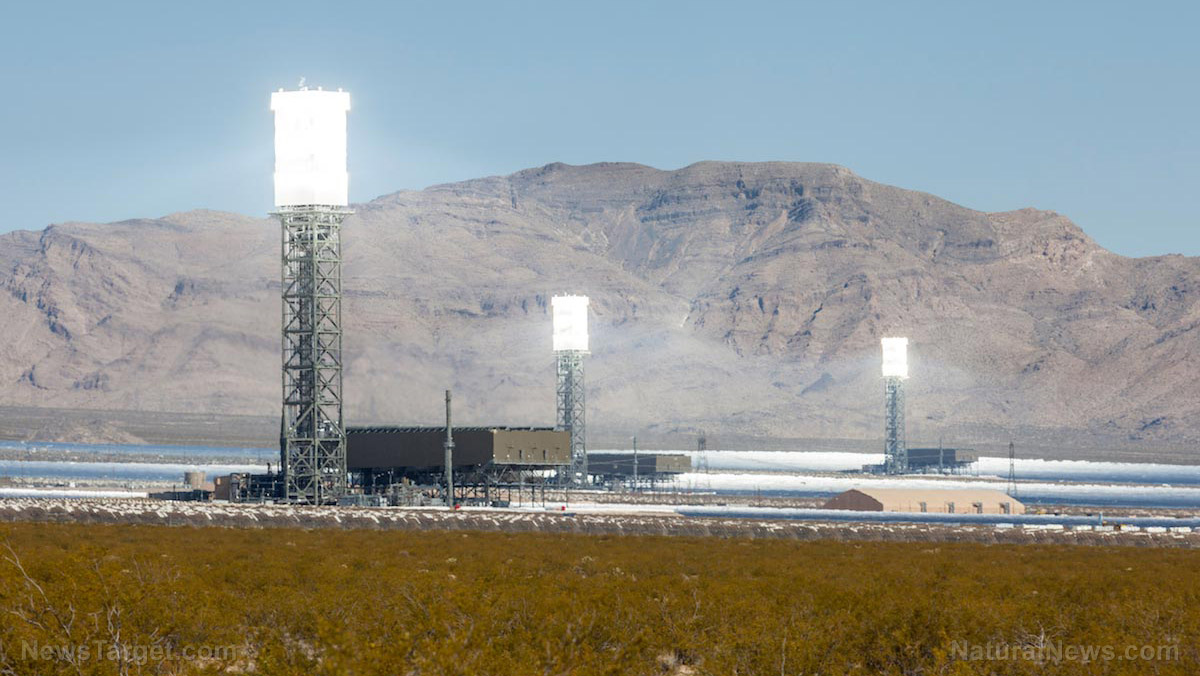Solar sector still growing: Solar power output rose 47% in the first three quarters of 2017, highlighting Trump’s support for clean power
01/04/2018 / By Jhoanna Robinson

Two major solar power plants – Switch Station 1 and Switch Station 2 – which generate a total of 179 megawatts of solar power, recently began commercial operations on Bureau of Land Management (BLM) property in southern Nevada.
This development brings home the fact that solar power is still booming in the United States even if President Donald John Trump barely mentions it. According to the Department of Energy, the country’s solar output increased by 47 percent during the first three quarters of 2017.
Proponents of the project – which feature Tempe, Arizona-based photovoltaic solar panel manufacturer First Solar, Inc. (which made it); wind and solar power solutions provider EDF Renewable Energy (which runs it); and Arlington, Virginia-based environmental organization The Nature Conservancy (which crafted the plan to offset its environmental impacts) – are of the belief that federal land has tremendous renewable energy capacity given proper planning and execution.
The project is located within the Dry Lake Solar Energy Zone, one of 19 zones that the Department of Interior marked as appropriate for large projects. Placing the project there cut the permitting time in half and decreased its cost to 3.8 cents per kilowatt hour.
The two stations stretch at an expanse of around 1,797 acres. The project has 1,980,840 solar panels and creates enough power to support the energy demands of around 4,600 homes. Switch, a major data center, plans on using the energy created by the two solar stations in its bid to be 100 percent powered by renewable energy.
“The administration is completely supportive of ‘all-of-the-above’ energy. It’s just the first of more that are coming, especially for Nevada, and probably California, as well,” BLM Nevada director John Ruths said in an interview on Dec. 17, 2017.
The Nature Conservancy helped facilitate the $6.9 million restoration project that will offset the solar plant’s environmental impact by improving a desert tortoise habitat about 45 minutes away from the area. “There’s a better way of doing things. It’s a question of whether that will continue. I’m confident it will here in Nevada. Stay tuned,” said The Nature Conservancy‘s Mojave Desert program director John Zablocki.
U.S. solar industry concerns
The U.S. solar industry has two conflicting interests: the manufacturing side and the sales/installation side. The conflict here is that the domestic manufacturing industry has suffered due to a deluge of low-cost imports from China and elsewhere, forcing the sales side to give customers the lowest possible prices.
The U.S. International Trade Commission last fall voted in favor of a new tariff that would raise the cost of manufacture for local manufacturers but at the same time hurt the sales side by also raising prices. Another caveat of this tariff is it could cause the loss of 88,000 jobs in the solar labor force. (Related: Solar power has now become the cheapest way to produce electricity.)
For more updates on energy sources, especially the renewable ones, visit Power.news today.
Sources include:
Tagged Under: energy, environ, future tech, green energy, power, President Trump, renewable energy, solar plant, solar station, Trump administration




















